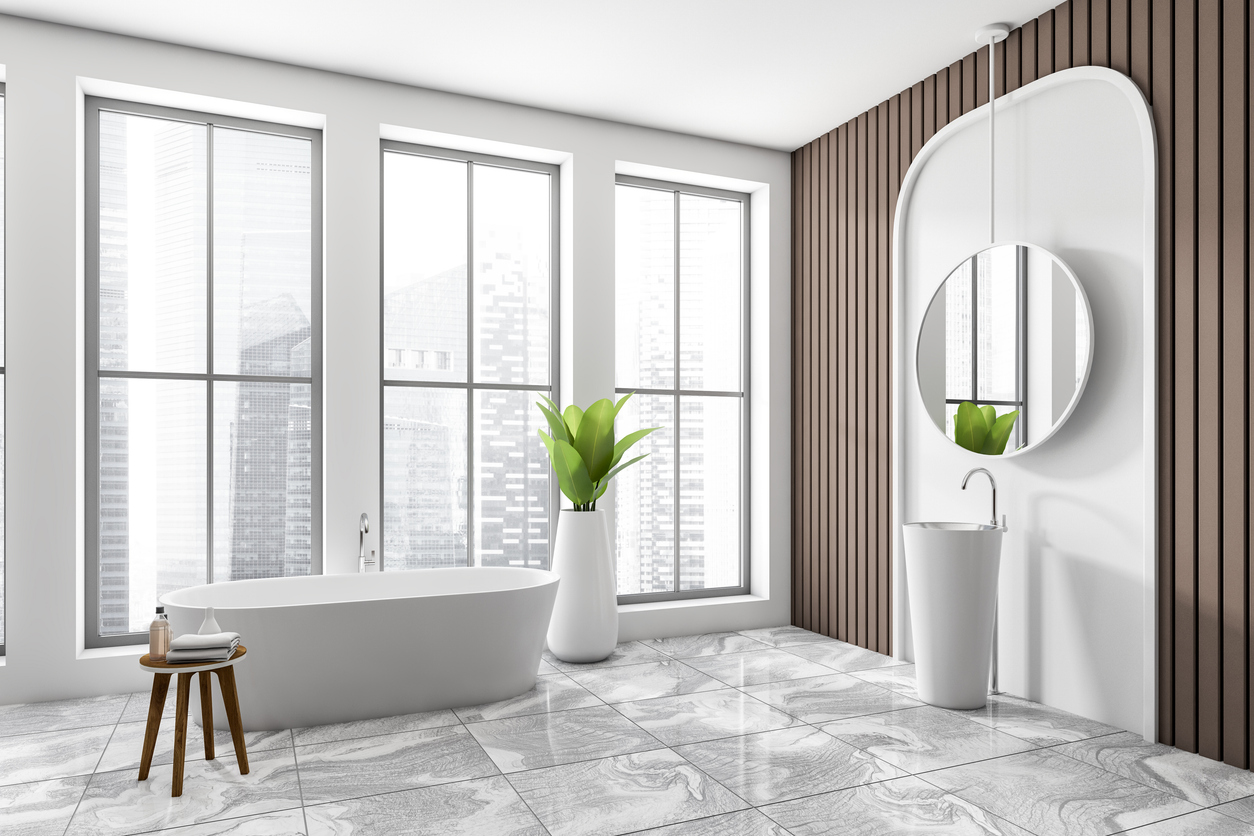
Deep Bathtubs Buying Guide 2025 -Photos & Examples
Deep bathtubs are designed for full-body immersion, offering greater depth and a more luxurious soaking experience than standard tubs. Perfect
Purchasing a new bathtub can be an exciting, yet daunting challenge. Depending on your budget, space and style; you will need to start researching the basics. The acrylic bathtub is the most common and affordable bathtub on the market today. This article will discuss everything you need to know about an acrylic bathtub before you choose which tub will be the centerpiece in your bathroom.
Jump to a specific question:
An acrylic bathtub is a bathtub formed by vacuum sheets of acrylic, which is then reinforced with fiberglass. The advantages of this design method is that you are afforded all the positives of fiberglass with the acrylic reinforcing the negatives, mainly the less than ideal durability of fiberglass as a material.
Fiberglass is also a porous material, which means it will absorb water regularly, leading to warping and lower lifespan of the material. With the inclusion of acrylic, an acrylic bathtub is no longer porous with the sheets providing enough of a barrier between the water and the bathtub itself.
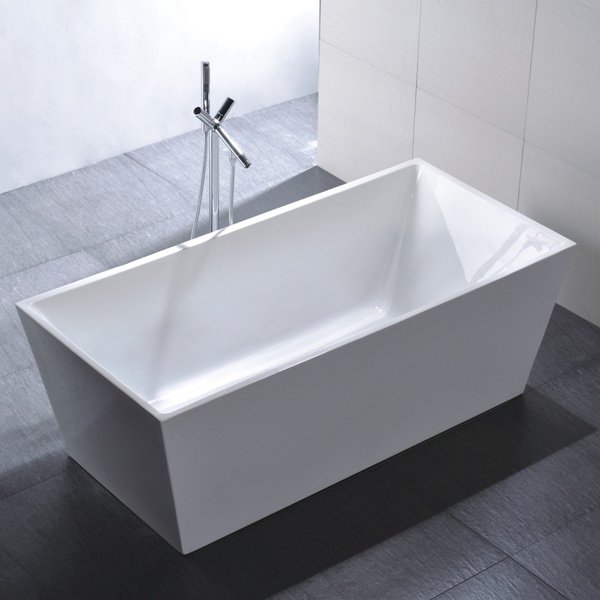
As it is essentially a reinforced fiberglass bathtub, acrylic bathtubs enjoy a plethora of designs, shapes, and sizes. The three most common shapes would be your typical alcove design, which functions as the standard drop-in design with an average size of 60 inches in length, 32 inches wide and 18 inches tall.
This is followed by the oval or other circular shapes which are an increasingly popular freestanding design with an average of 60 inches in length, 41 inches in width and a height of 24 inches. For those who want a more luxurious setup, there exists the corner bathtub which takes the shape of a full square and predominately is the starting point for a hot tub like a bathtub.
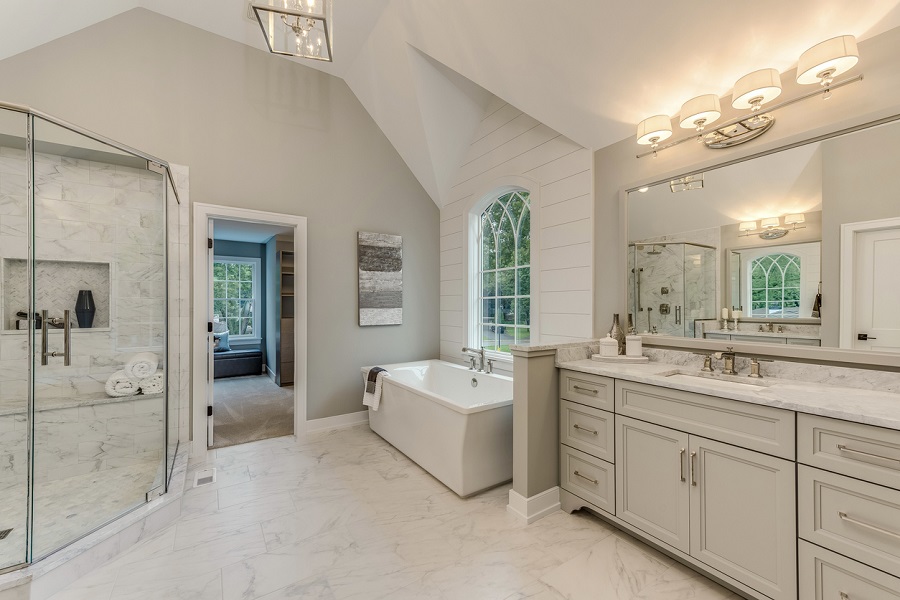
The average size of a corner bathtub is usually 60 inches long, 60 inches wide with a height of 22 inches. However, since Acrylic is so readily flexible as well as affordable, there are many shapes you can manufacture that fit anywhere between these three spectrum without an enormous hit on your budget.
Also, since fiberglass is already a lightweight material, the added reinforcement with colored acrylic does not add too much additional weight, making this material the lightest on the market, allowing for much easier install and repair jobs down the line.
So, whether you want a traditional freestanding or a drop-in, an acrylic bathtub can easily be made to suit your needs at an affordable price.
There are many pros and cons of acrylic tubs. All depending on your unique situation, some of these advantages and disadvantages will carry more weight when considering purchasing a bathtub.
Since the base of the bathtub is made from fiberglass, acrylic bathtubs tend to be lighter than other materials on the market. The lightweight results in less stress on your bathroom floor as well as ease of install.
These bathtubs tend to be cheaper as they are essentially reinforced fiberglass bathtubs. The flexibility in price point also comes from the fact that the material is lightweight, yet still quite durable, given the price point offered. Although acrylic bathtubs tend to be more expensive than fiberglass bathtubs, these bathtubs are still quite affordable-especially compared with other materials such as cast iron and porcelain.
The price point for a durable material that comes in so many distinct designs and sizes is a good reason for their popularity.
With the material being lightweight, acrylic bathtubs enjoy a multitude of different shapes, sizes, and designs. Since it is quite a deal cheaper to manufacture, at least when compared to other bathtub materials, acrylic offers the widest selection for an affordable price.
Even with the base being fiberglass, the acrylic reinforcement solves many of the issues with fiberglass bathtubs. Acrylic is non-porous, meaning that an acrylic bathtub will not absorb water, leading to a longer lifespan. The material is also more durable to heavy impacts and will not chip or crack.
As stated before, acrylic bathtubs do not have a porous surface, which means they will not absorb water and thus will not eventually warp like fiberglass does. The non-porous surface also means that it will benefit from a longer heat retention compared to fiberglass as well.
Acrylic tubs offer very good heat retention, especially for its cost. The great thing about acrylic bathtubs is that they can retain heat better than most bathtub materials on the market. So, if you’re thinking of getting a bathtub that will allow you a long soak, you will not go wrong with acrylic.
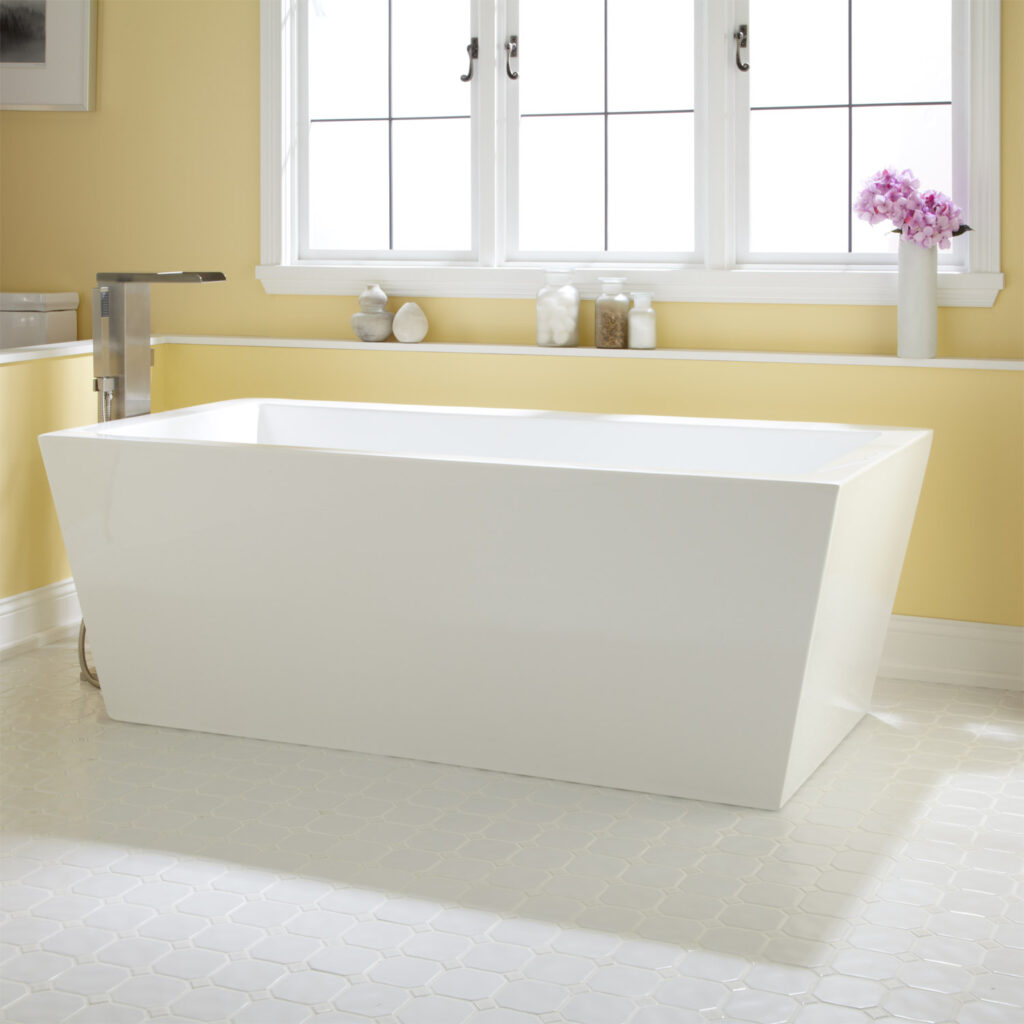
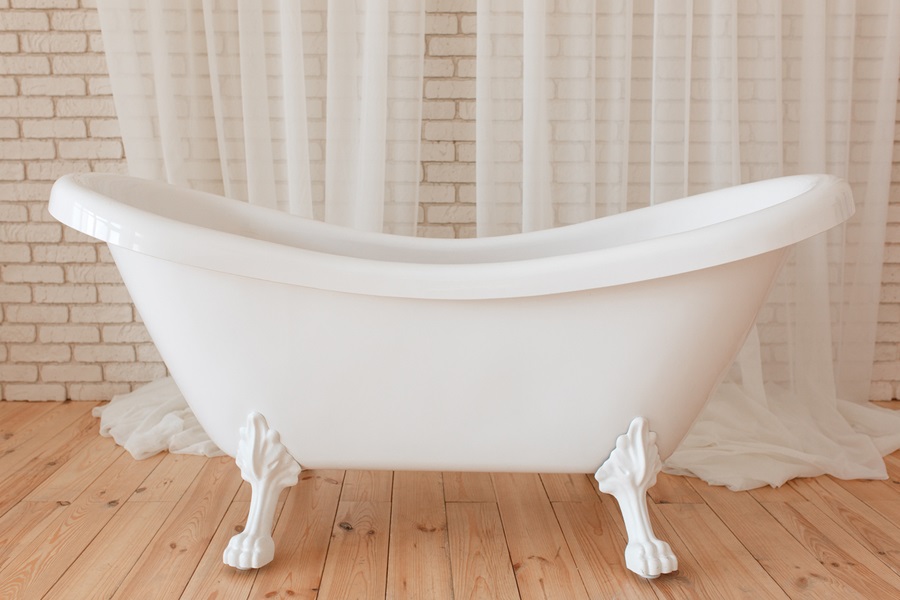
Unfortunately, while the material is durable to most physical abuse, acrylic tends to be considered a “softer” material and thus is highly susceptible to scratching. Avoid using harsh, abrasive cleaners when cleaning an acrylic bathtub to avoid permanent marks dotted through it.
Since it is one of the most affordable options on the market, acrylic bathtubs also tend to carry the shortest lifespan. You can expect roughly 10-15 years of use out of your acrylic bathtub before you should consider replacing it due to heavy discoloration or cracking.
While it is incredibly versatile bathtub material, acrylic still ends up being quite a great deal more expensive than fiberglass. This is only an issue if the drawbacks of acrylic bathtubs are not in keeping with your needs. Since their overall lifespan is a great deal lower, one should consider saving for other materials with more longevity especially with prices as competitive as they are.
| Characteristics | Acrylic tub | Cast iron tub |
| Customization | Excellent | Poor |
| Cleaning and maintenance | Easy | Easy |
| Heat retention | Good | Excellent |
| Price | $500 – $900 | $500-$2,000 |
For the price point, cast iron bathtubs are a great deal better than acrylic. Made from iron coated with enamel, these bathtubs have excellent heat retention, easy maintenance, are highly resistant to scratching and chipping, are aesthetically more vibrant and enjoy an enormously long lifespan. Initially, the only benefit that acrylic has over cast iron is the flexibility in shapes and designs as cast iron is a significantly heavier material to work with. Which comes to the primary drawback of cast iron-it’s weight.
Cast iron ends up being one of the heavier materials on the market, making it more difficult to install and adding more stress on your bathroom floor—additional supports or reinforcing may be required to install a bathtub of this material in your home. When comparing the price points between the two, most cast iron bathtubs tend to be roughly twice the price of an acrylic bathtub, but considering the lifespan between the two, the cast iron bathtub tends to be a more worthwhile investment. If your bathroom can handle the weight requirement, you might also consider a garden tub, which offers a luxurious and spacious bathing experience, complementing the durability and timeless appeal of cast iron.
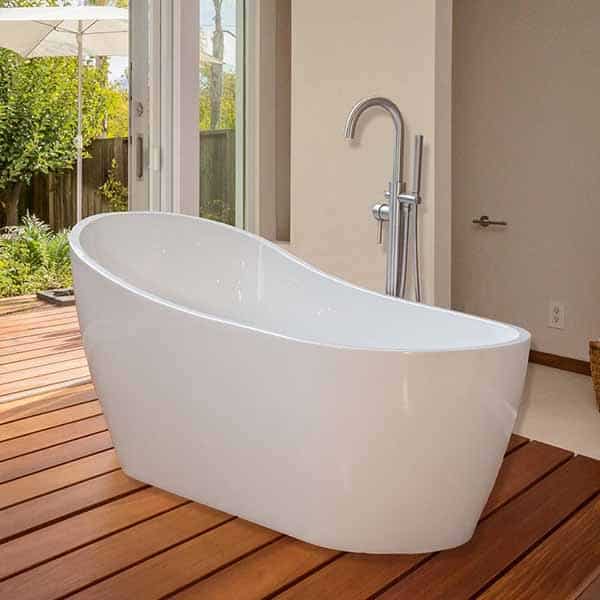
| Characteristics | Acrylic tubs | Fiberglass tubs |
| Cleaning and maintenance | Easy | Easy |
| Customization | Excellent | Excellent |
| Resistant to cracks | Good | Poor |
| Price | $500 – $900 | $200-$300 |
Acrylic and fiberglass bathtubs share similarities as the core of an acrylic bathtub is a fiberglass bathtub initially. This means that both bathtubs are lightweight, easy to install, come in a multitude of shapes and can be repaired easily. That is where the similarities end as fiberglass is a porous material that is prone to chipping and cracking from heavy impacts and will warp over time. As the material is also considerably cheaper, there are limited color options for fiberglass bathtubs as they don’t tend to be that popular-coming in mostly a very standard white color.
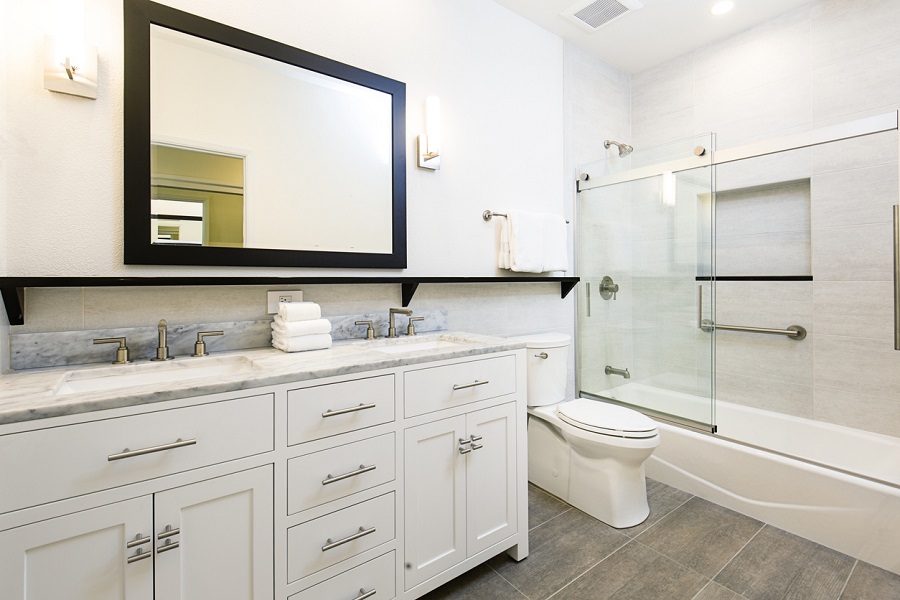
Acrylic bathtubs, on the other hand, come in a wide variety of colors, are much more durable to cracks and heavy impacts, and most importantly, acrylic is a non-porous material. The tradeoff for these benefits is a heavier price tag, with acrylic bathtubs usually costing $100-200 more than a fiberglass bathtub of the same size. However, considering that fiberglass is a rather flimsy material with many drawbacks, an acrylic bathtub is well worth the additional price tag for a more durable material. When picking the right bathtub material, it’s essential to weigh the long-term benefits and durability against the initial cost to ensure you make the best choice for your bathroom needs. Additionally, if you’re looking for added luxury, consider investing in a whirlpool tub made from acrylic, which combines durability with the therapeutic benefits of built-in water jets for a relaxing spa-like experience at home.
On the whole, acrylic bathtubs are quite easy to maintain, although they will require more consistent maintenance when compared to other materials. Remember that acrylic bathtubs have a very soft surface, meaning they are highly sensitive to abrasive cleaners. The recommended cleaner for most situations would be either a mixture of vinegar and warm water, although dish soap is perfectly acceptable as well. Baking soda is another cleaner, but it will leave residual spots behind, so be mindful of that.
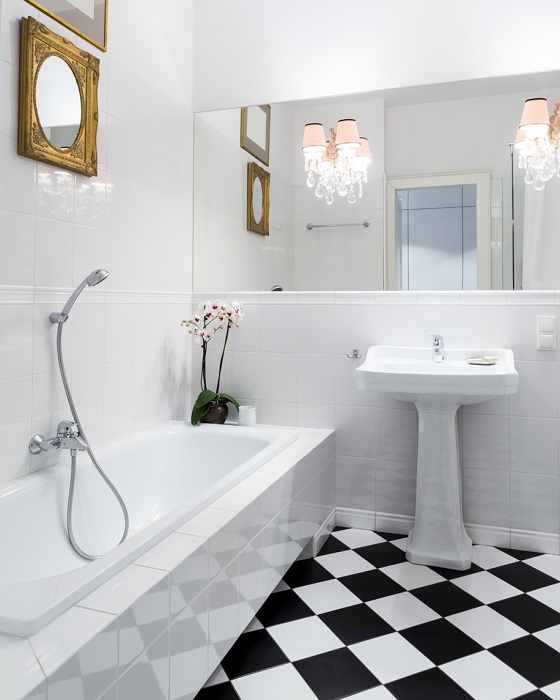
Always use a light brush with low bristles or even a toothbrush would be perfectly acceptable. Now, simply clean any problem spots at least once a week to prevent grime build up. Water spots will also show up regularly, along with hard water stains. Lemon or natural acidic products will help to remove those spots. Just remember that while it is easy, acrylic bathtubs will require more consistent maintenance throughout each week to prevent mold or stain build up.
An acrylic bathtub is a great starting point for a bathtub. It’s affordable, easy to clean, relatively durable and comes in a wide variety of designs and unique shapes. But the material doesn’t really have any longevity and it lacks aesthetic appeal, so down the road, it is highly suggested that you consider upgrading to a more lasting material like cast iron.
Check the edges on your bathtub. If your bathtub has thinner edges, it could be a plastic fiberglass. If the edges are thicker, it could imply that you have an acrylic bathtub. To be absolutely sure, just press your hand against the bathtub. If it has a little give or flexibility, it’s acrylic.
There is a possibility that your acrylic tub turns yellow over time, but if you maintain it and clean it properly and frequently, you don’t have to worry about yellow stains for some time. Keep in mind that acrylic tubs are prone to discoloration and stains, so make sure to take care of it properly.
You might think that because fiberglass tubs are more resistant to scratches and have a harder surface than acrylic tubs that these tubs are your safe bet. However, because of their surface, fiberglass tubs are more susceptible to cracks, whereas the acrylic is a much softer material that can give you better value for money.
If your acrylic tub has cracks, you can easily repair it on your own. All you need is a surface repair kit that you can easily purchase at a store or online. Most of these solutions are budget-friendly and will only require a few minutes to repair the cracks. Fixing bathtub cracks is a straightforward process with these kits. Once you apply it, make sure you leave your tub to dry as much as instructed on the product to ensure a proper and lasting repair.

Eric is the founder and president of Badeloft USA. He has been the president of Badeloft’s US division for over ten years and oversees all marketing and branding aspects of Badeloftusa.com.
His expertise lies in small business development, sales, and home and bathroom industry trends and information.
Contact us with any business related inquiries.
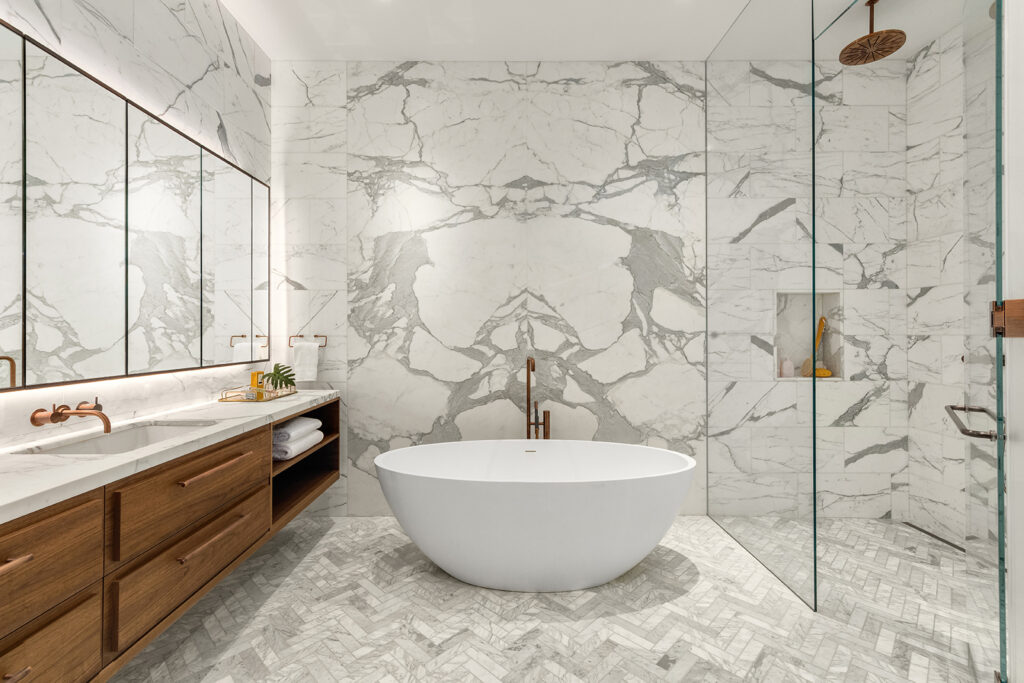
Free material samples and tub templates

Deep bathtubs are designed for full-body immersion, offering greater depth and a more luxurious soaking experience than standard tubs. Perfect
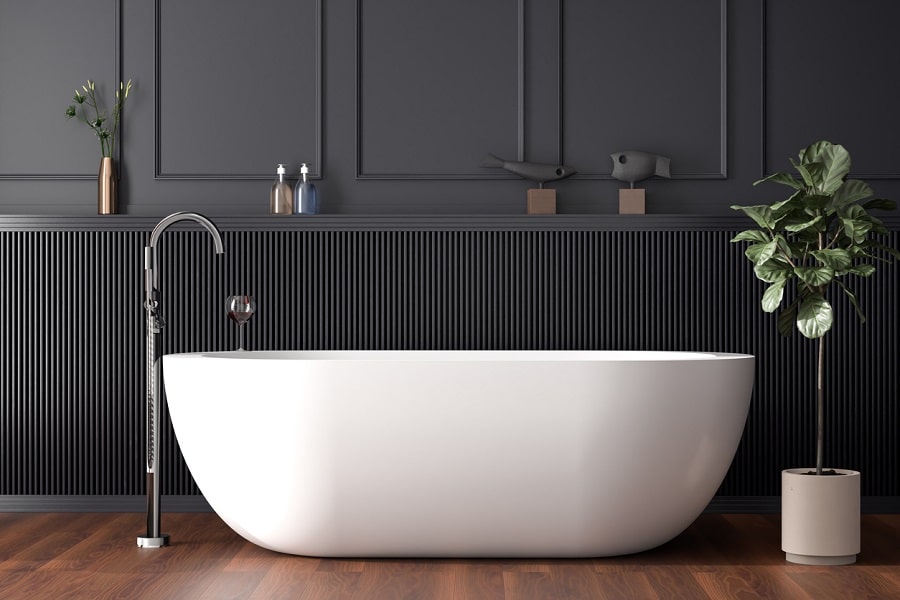
In 2025, bathtubs will be more than functional fixtures—they’ll be bold design statements that define bathroom aesthetics. From timeless white
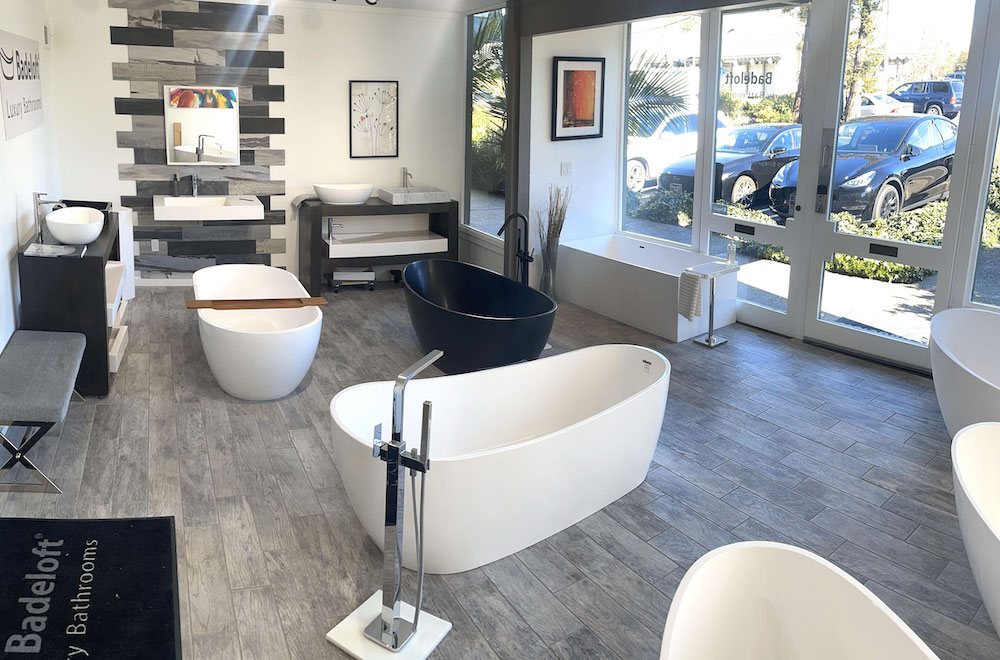
The San Francisco Bay Area is home to a variety of top-rated bathtub shops offering everything from modern, luxury designs
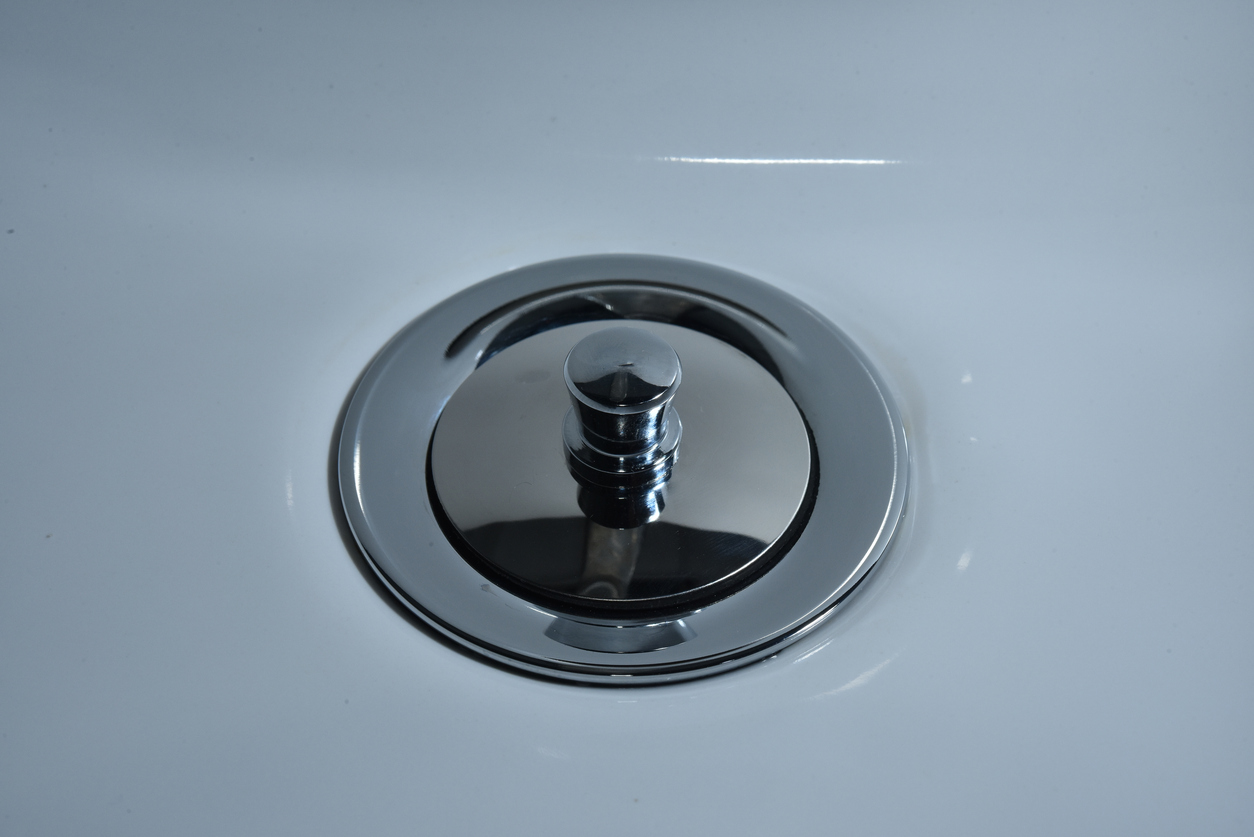
Choosing the right bathtub drain stopper is essential for creating a comfortable and functional bathing experience. With over 20 common
Fill out the form below to request a free material sample
"*" indicates required fields
"*" indicates required fields
"*" indicates required fields
I think acrylic tubs is better.Acrylic tubs is easy to maintain and cost is quite low. Acrylic tubs has a unique design.
Acrylic bath tubs are much better than ordinary tubs